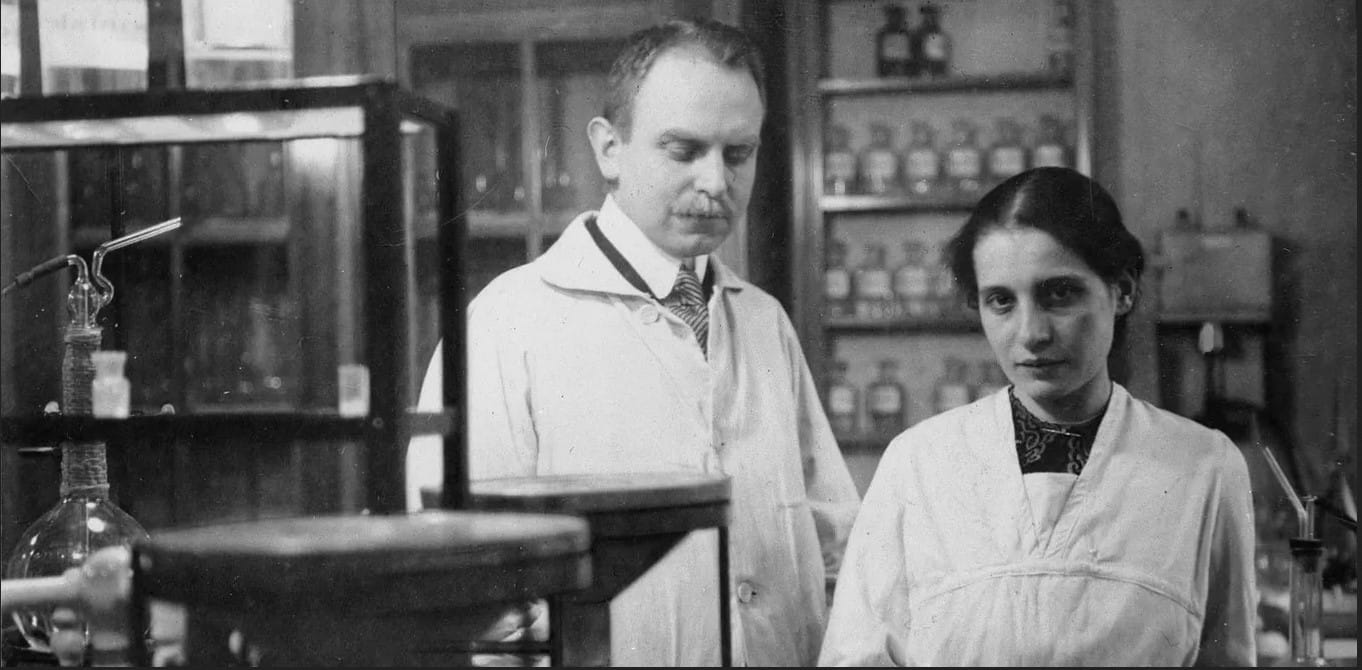meitnerium

Meitnerium is a synthetic chemical element with atomic number 109 and the symbol Mt. It is extremely radioactive, with a half-life measured in seconds. It was first created in 1982 at the Center for Heavy Ion Research in Darmstadt, Germany. It is named for physicist Lise Meitner, the physicist who in 1938, along with her nephew and fellow physicist Otto Robert Frisch, and chemists Otto Hahn and Fritz Strassman, discovered nuclear fission. Hahn, alone, received the 1944 Nobel Prize in Chemistry for the discovery. Placing Meitner in the long line of women who have been denied a Nobel Prize because of their sex.
While it was first synthesized in 1982, it took a decade for the element to be named and another five years for the International Union of Pure and Applied Chemistry (IUPAC) to officially bless the name meitnerium. The naming was delayed not for anything having to do with meitnerium itself, but because of a dispute over who had first synthesized other transuranic elements. The name was first revealed in an article in the 18 September 1992 issue of Science that detailed the naming controversy:
Call it a late christening ceremony. Researchers from the German Heavy Ion Research Society's laboratory in Darmstadt last week announced names for three chemical elements (107, 108, and 109 in the periodic table)—the heaviest elements yet discovered—that were found at Darmstadt way back in the early 1980s
[…]
Why did the German researchers wait so long to name their elements? The answer lies in an unseemly row that has been raging since the 1960s. Both the Dubna researchers and their main competitors—a team from the Lawrence Berkeley Laboratory led by Glenn Seaborg—claim to have discovered elements 104 and 105. The Americans wanted to name them rutherfordium and hahnium; the Russians, kurchatovium and nielsbohrium. Until this squabble was sorted out, the naming of the heavier elements was also held up.
[…]
Elements 104 and 105 are therefore still embroiled in controversy. But 107 to 109 are finally cleared for christening by the Darmstadt researchers. Assuming the names are approved, as expected, by IUPAC's Commission on the Nomenclature of Inorganic Chemistry, element 107 will be called nielsbohrium (as a gesture to the Dubna group); 108 will be named hassium, after the Latin name for Hesse, where the Darmstadt lab is based; and 109 is to be meitnerium, after the German nuclear physicist Lise Meitner.
IUPAC approved the name in September 1997.
Sources:
Holden, Constance. “Random Samples.” Science, 257.5077, 18 September 1992, 1626–27 at 1626. JSTOR.
Miśkowiec, Pawel. “Name Game: The Naming History of the Chemical Elements—Part 3—Rivalry of Scientists in the Twentieth Century.” Foundations of Chemistry, 12 November 2022. DOI: 10.1007/s10698-022-09452-9.
Oxford English Dictionary, third edition, June 2001, s.v. meitnerium, n.
Stone, Richard. “Transuranic Element Names Finally Final.” Science, 277.5332, 12 September 1997, 1601. JSTOR.